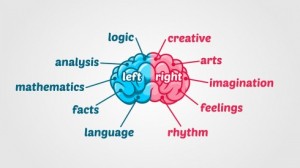
Thinking Styles: Find Out How You Think
In my work as a coach, I find most of us can’t identify our own thinking styles. We’re too immersed in our behaviors and habits.

In my work as a coach, I find most of us can’t identify our own thinking styles. We’re too immersed in our behaviors and habits.

Typically, we handle problems in a tried and true way that we’re comfortable with. We don’t even think we have a thinking style because it’s

Are you using your brain to its optimum capacity? What thinking skills should you develop? I read in Harvard Business Review that successful organizations of
What’s your thinking style? Just like we have personality preferences for introversion and extraversion, we also have preferred ways of thinking about a problem. There’s

Understanding how you think and how you solve-problems is essential for leaders. When you consider successful organizations—though they are measured by what they produce—they function

You can’t expect yourself to perform well on the job unless you pay attention to brain fitness. If you’re starting to wonder about forgetting things,

Each summer, I receive more than one hundred new graduate HR students across a couple of sections of the Labor Issues and Conflict Management course

At Proffitt Management Solutions, we recognize that some of the most influential coaching techniques have roots in history. The Socratic Method, an approach crafted by

An organization’s health is only as sound as its leader’s decisions. Some companies prosper from wise leadership directions, while others struggle after flawed choices—choices that

How a leader responds to adversity reveals how effective that leader truly is. Reactions to setbacks or crises not only test leadership character but define

Business is an active, demanding endeavor. Only those who consistently apply themselves succeed. Organizations that thrive require leaders who actively dream, plan, engage, solve, pursue,

Surveys and studies indicate global job dissatisfaction is at a two-decade high. Disengaged employees account for nearly 70 percent of the workforce, which significantly affects







